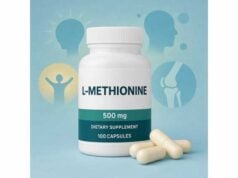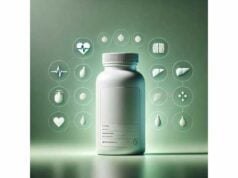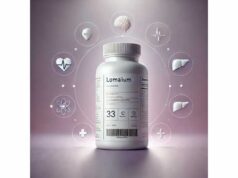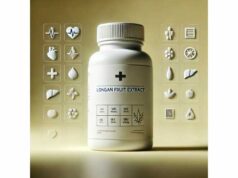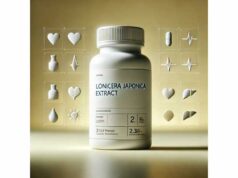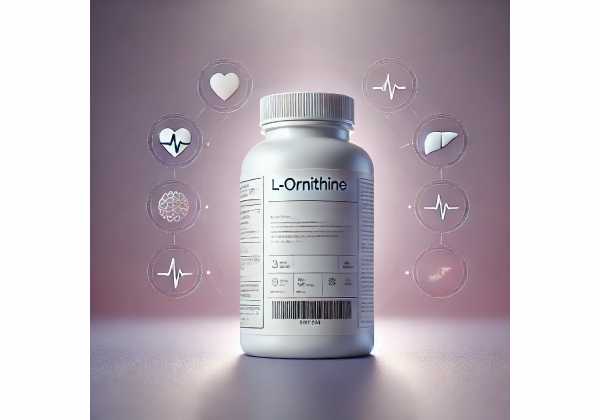
L-ornithine is a non-protein amino acid your body makes as part of the urea cycle—the metabolic pathway that turns ammonia, a toxic by-product of protein metabolism, into urea for safe excretion. As a supplement, L-ornithine shows the clearest promise in two areas: supporting ammonia clearance (with medical-grade salts like L-ornithine-L-aspartate used in liver clinics) and easing subjective stress or sleep disturbance in otherwise healthy adults under pressure. Athletes also explore it for fatigue during hard training, though results vary. This guide translates research into practical steps: how L-ornithine works, realistic benefits, how to use it, who should avoid it, and how it fits with standard treatments for liver-related ammonia problems. Expect steady, background support rather than quick, dramatic effects—and pair it with fundamentals like sleep, balanced protein intake, hydration, and medical care where needed.
Quick Overview
- Most consistent effect: helps lower ammonia via the urea cycle; medical salt forms are used in hepatic encephalopathy care.
- Potential in daily life: small trials suggest better stress resilience and sleep quality with 400–1,000 mg/day.
- Typical ranges: 400–1,000 mg/day for stress or sleep; 2–6 g/day split for training fatigue; medical use of L-ornithine-L-aspartate often 9–18 g/day under supervision.
- Safety note: watch for GI upset; long courses or high doses need clinician oversight, especially with liver or kidney disease.
- Avoid: pregnancy or breastfeeding, children without clinical advice, and anyone with a urea-cycle disorder unless managed by a specialist.
Table of Contents
- What is L-ornithine?
- Does it work? Evidence-backed benefits
- How to use it day to day
- How much per day?
- Side effects, interactions, and who should avoid it
- What the research says: a concise evidence map
What is L-ornithine?
A urea-cycle workhorse
L-ornithine sits at the heart of the urea cycle, where it combines with carbamoyl phosphate to form citrulline, eventually leading to urea formation. That biochemical loop is how your body neutralizes ammonia from protein metabolism and intense exercise. Because L-ornithine helps keep this cycle turning, adding more can, in some contexts, improve ammonia disposal efficiency.
Supplement forms you’ll see
- L-ornithine (free base or HCl): the common over-the-counter form for general wellness, stress, and training-fatigue protocols.
- L-ornithine-L-aspartate (LOLA): a medical-grade salt used in liver disease to lower ammonia and manage hepatic encephalopathy (HE). Oral powders and IV solutions are prescribed in clinics and studied in clinical trials.
- Stacks: sometimes paired with L-arginine (a precursor) or L-citrulline (which recycles to arginine) for performance; or blended with magnesium and theanine in sleep formulas.
How it works, in plain terms
- Ammonia control: By feeding the urea cycle, L-ornithine can speed the conversion of ammonia to urea. In liver disease, LOLA additionally supplies aspartate to support glutamine synthesis—another route that binds ammonia for safe handling.
- Stress and sleep: Small randomized trials in healthy workers report reductions in the cortisol/DHEA-S ratio and improved self-rated sleep quality after several weeks of L-ornithine. Mechanistically, better ammonia handling and gentle shifts in stress-hormone tone may contribute.
- Exercise fatigue: During high-intensity efforts, rising ammonia correlates with central fatigue and impaired muscle output. Some studies show L-ornithine blunts that rise and preserves short-burst performance; others show little difference, likely due to dose and training status.
What it is not
- A cure for liver disease or a replacement for first-line therapies (e.g., lactulose, rifaximin) when hepatic encephalopathy is present.
- A stimulant or sedative—L-ornithine’s effects are subtle and build with routine use.
- A protein or essential amino acid; you can’t “build tissue” with ornithine directly.
Bottom line
L-ornithine is best understood as a metabolic helper: it supports ammonia clearance and may ease stress-related sleep issues, with medical salt forms used in liver clinics. Benefits are context-dependent and modest; quality, dose, and consistency matter.
Does it work? Evidence-backed benefits
1) Hepatic encephalopathy support (medical use of LOLA)
In people with cirrhosis and elevated ammonia, the L-ornithine-L-aspartate salt (LOLA) reliably lowers plasma ammonia and, in many trials, improves mental status compared with placebo. It’s generally used with, not instead of, standard therapies like lactulose and rifaximin. Intravenous LOLA is often reserved for hospitalized patients with overt HE; oral powders or sachets are used in outpatients, including those with minimal HE. Clinical practice guidelines recognize ammonia-lowering strategies as part of a structured HE plan that includes nutrition, precipitant control (e.g., infection), and careful follow-up.
What this means for you: If you or a family member has HE, L-ornithine as LOLA may be part of your doctor’s toolkit. Do not self-treat—dose and route (oral versus IV) are individualized, and monitoring is essential.
2) Stress resilience and sleep quality (healthy adults under pressure)
A randomized, double-blind, placebo-controlled trial in healthy workers under chronic stress found that daily L-ornithine reduced the cortisol/DHEA-S ratio and improved self-reported sleep quality over several weeks. Participants also reported lower anger and tension. Newer studies using social-stress paradigms (like the Trier Social Stress Test) echo reductions in stress markers with short-term higher dosing. While effects are modest, they are consistent enough to justify a 4–8 week personal trial if stress-related sleep disturbance is your main concern.
Practical translation: Start low (e.g., 400–500 mg in the evening) and track sleep quality and next-day mood for a month. Combine with routine sleep hygiene (fixed wake time, low evening caffeine, dimmer light).
3) Training fatigue and recovery
By accelerating ammonia clearance, L-ornithine may blunt central fatigue during repeated bursts of high-intensity effort. Some controlled studies show smaller performance drop-offs and lower perceived fatigue with 2–6 g/day, while others show no change. The difference often comes down to participant training status, protocol length, carbohydrate availability, and exact dose.
When it helps: Intermittent, high-lactate sports (track cycling sprints, team-sport repeats) and heavy training blocks where perceived fatigue creeps up.
When it’s less likely to help: Long steady-state endurance, low-glycogen sessions where other factors dominate, or protocols using low doses or very short supplementation windows.
4) Everyday energy and focus
Because fatigue has many drivers (sleep debt, iron status, hydration, mood), L-ornithine alone won’t fix general tiredness. But if your fatigue correlates with late-day hard sessions, high protein intake, or stress-disrupted sleep, a structured L-ornithine trial may give a subtle lift.
Expectations you can trust
- Benefits are incremental, not dramatic.
- Effects build over weeks (stress/sleep) or require adequate dosing (training).
- For liver disease, medical oversight is non-negotiable; L-ornithine is an adjunct.
How to use it day to day
Pick a format for your goal
- Stress or sleep support: Plain L-ornithine capsules or powder. Evening dosing is common; some prefer 50–50 split (late afternoon + 60 minutes before bed).
- Training fatigue: Plain L-ornithine taken daily during a training block, or pre-session (60–90 minutes prior) for repeated-sprint or high-intensity days.
- Liver-related ammonia issues: LOLA prescribed by your clinician; do not self-dose.
Build a simple routine
- Choose a starting dose aligned to your goal (see the next section).
- Use the same time(s) daily for 2–4 weeks before judging it.
- Track 2–3 signals only (e.g., sleep latency, night awakenings, next-day energy; or perceived exertion and session quality).
- Adjust one variable at a time (dose or timing, not both).
- Take planned breaks after 8–12 weeks to reassess need and prevent “habit creep.”
Smart combinations (optional)
- Sleep/stress stack (evening): L-ornithine + magnesium glycinate + theanine. Keep caffeine early, reduce late-night light, and keep the room cool and dark.
- Training stack (pre-HIIT): L-ornithine + adequate carbohydrates, electrolytes, and your usual citrulline or beta-alanine if tolerated.
- What to avoid: Excess alcohol (pushes ammonia up), very high late-evening protein, or doubling multiple new supplements at once.
Diet matters
Since L-ornithine works in nitrogen handling, a balanced protein intake helps—enough to recover (typically 1.6–2.2 g/kg/day for trained adults) but spread across the day to avoid very large single boluses late at night. Adequate carbohydrates around high-intensity efforts can limit ammonia buildup by supporting oxidative pathways.
Storage and quality
- Keep capsules or powders sealed, away from heat and moisture.
- Look for brands that list identity testing, assay (potency), and heavy-metal results. Ornithine is stable, but good manufacturing practices still matter.
Self-check prompts
- After 2–4 weeks, is sleep onset shorter? Are night awakenings fewer? Is next-day mood calmer?
- During training blocks, does perceived fatigue drop on repeat sprints? If not, revisit carbohydrate timing or dose.
- Any GI symptoms? If yes, reduce dose and split it up; take with a small snack.
How much per day?
Important: Dose depends on your goal, timeline, and tolerance. Start low, go slow, and give it enough time to judge fairly.
Everyday stress or sleep quality
- Start: 400–500 mg once daily, preferably 60 minutes before bed.
- If needed: increase to 800–1,000 mg/day, either as a single evening dose or split early evening + bedtime.
- Trial length: 4–8 weeks, then reassess. If there’s no clear benefit at 1,000 mg/day, discontinue rather than escalating.
Training fatigue and recovery
- Daily approach: 2–6 g/day, divided 2–3 times, during a 2–4 week training block.
- Targeted approach: 2–3 g taken 60–90 minutes pre-session on high-intensity days.
- Notes: Pair with carbs and hydration; avoid stacking multiple ammonia-modulating agents without a plan.
Medical use in hepatic encephalopathy (LOLA only, under supervision)
- Oral powders/sachets: commonly 3–6 g, two to three times daily (9–18 g/day total).
- Intravenous: used in hospital protocols for overt HE; dosing and duration are individualized.
- Positioning: adjunct to standard care (lactulose, rifaximin), nutrition therapy, and precipitant treatment. Never self-start.
Special populations
- Pregnancy or breastfeeding: avoid due to limited safety data at supplemental doses.
- Children/adolescents: only with clinician guidance and weight-based dosing.
- Liver or kidney disease: doses and forms must be clinician-directed; blood tests guide adjustments.
Titration checklist
- Hold the starting dose for 7–14 days.
- If well tolerated but effects are unclear, increase by 200–500 mg (stress/sleep) or 1–2 g/day (training).
- If GI upset occurs, lower the dose, split dosing, and take with a snack.
- After 8–12 weeks, take a 1–2 week break and see if benefits persist; restart only if the difference is obvious.
Upper bounds and safety guardrails
- Short studies report tolerance at up to 6 g/day of plain L-ornithine in healthy adults, but long-term high-dose data are sparse—stay conservative unless you’re in a supervised program.
- For LOLA, follow your clinic’s protocol—doses above 10 g/day are common only in medical settings with monitoring.
Side effects, interactions, and who should avoid it
Typical, usually mild
- GI upset: nausea, cramping, or loose stool—more common with higher single doses or empty-stomach use. Reduce dose, split across the day, and take with food.
- Headache or restlessness: uncommon; back off if noticed.
- Taste/afterfeel (powders): slightly bitter; mixing into a flavored drink helps.
Less common
- Electrolyte shifts or fluid retention are not typical with plain L-ornithine but can arise from broader dietary patterns (e.g., very high sodium) or comorbid conditions.
- Allergy-type reactions are rare; discontinue and seek care if rash, wheeze, or swelling occurs.
Drug and supplement interactions
- Liver medications for HE: L-ornithine as LOLA is often added to lactulose/rifaximin; your clinician balances doses and monitors ammonia, mental status, and bowel frequency.
- Sedatives/sleep aids: if you feel unusually drowsy, simplify the stack—adjust one agent at a time.
- High-protein regimes or late-night mega-shakes: can push ammonia up; spread protein evenly and front-load larger servings earlier in the day.
- Other amino-acid ergogenics: citrulline, arginine, beta-alanine are generally compatible; introduce one at a time to spot culprits if GI discomfort appears.
Who should avoid
- Pregnant or breastfeeding individuals (insufficient data).
- Children unless a clinician recommends and supervises.
- People with known urea-cycle disorders or severe renal dysfunction unless managed by a specialist.
- Anyone with active liver disease self-prescribing—medical assessment comes first.
When to stop and seek care
- New confusion, severe fatigue, jaundice, or easy bruising (especially in liver disease).
- Persistent vomiting, severe diarrhea, or signs of allergic reaction.
- Worsening sleep, mood, or performance after a fair trial—there’s no virtue in forcing a supplement that isn’t helping.
Practical safety habits
- Keep a simple log (dose, timing, sleep notes, session RPE).
- Review medications and lab results with your clinician if you have liver or kidney concerns.
- Reassess need every 8–12 weeks.
What the research says: a concise evidence map
Hepatic encephalopathy (HE)
Systematic reviews and clinical guidelines support the ammonia-lowering role of LOLA along with standard HE care. Oral and IV regimens reduce ammonia and often improve mental status compared with placebo; head-to-head comparisons with other agents show mixed results, and overall effect sizes vary with HE severity, route, and study quality. Modern HE care emphasizes precipitant control, nutrition, lactulose/rifaximin, and structured follow-up, with LOLA as a useful adjunct when chosen by the clinical team.
Healthy adults: stress and sleep
A randomized, placebo-controlled trial in healthy, stressed workers showed improved self-reported sleep and lower cortisol/DHEA-S after several weeks of L-ornithine. Newer randomized work using social-stress challenges reports similar stress-marker improvements with shorter high-dose protocols. These effects are modest but directionally consistent.
Athletic fatigue
Results are mixed. Some studies with 2–6 g/day report smaller performance drop-offs in repeated-sprint cycling and lower perceived fatigue; others using different protocols or shorter durations find no benefit. Given the heterogeneity, a personal trial during a defined training block—with good carbohydrate support and realistic expectations—is the fairest test.
Gaps and cautions
- Long-term safety data at high daily doses of plain L-ornithine in healthy adults are limited; stick to conservative ranges and time-limited trials.
- For HE, the quality of evidence varies, and no oral agent replaces comprehensive medical care.
- Claims about growth hormone boosts or major body-composition changes from L-ornithine are not well supported in robust trials.
Bottom line for evidence-based use
- Strongest clinical setting: HE management with LOLA, guided by a specialist.
- Reasonable self-care trial: stress-linked sleep issues with 400–1,000 mg/day for 4–8 weeks, paired with sleep hygiene.
- Experimental for athletes: 2–6 g/day in training blocks—judge by your own performance logs.
References
- EASL Clinical Practice Guidelines on the management of hepatic encephalopathy 2022 (Guideline)
- L-ornithine L-aspartate for prevention and treatment of hepatic encephalopathy in people with cirrhosis 2018 (Systematic Review)
- Efficacy of l-Ornithine l-Aspartate for the Treatment of Hepatic Encephalopathy and Hyperammonemia 2018 (Systematic Review and Meta-analysis)
- Randomised controlled trial of the effects of L-ornithine on stress markers and sleep quality in healthy workers 2014 (RCT)
- Inpatient management of hepatic encephalopathy 2024 (Review)
Medical Disclaimer
This article is educational and does not replace personalized medical advice, diagnosis, or treatment. Do not start, stop, or change any medication or medical-grade supplement (including L-ornithine-L-aspartate) without guidance from a qualified professional. Seek urgent care for new confusion, severe fatigue, jaundice, easy bruising, or any rapidly worsening symptoms. If you are pregnant or breastfeeding, have liver or kidney disease, or take prescription medicines, discuss L-ornithine with your clinician before use.
If this guide helped you, please consider sharing it on Facebook, X (formerly Twitter), or any platform you prefer, and follow us for future evidence-based updates. Your support helps us keep producing high-quality content.

